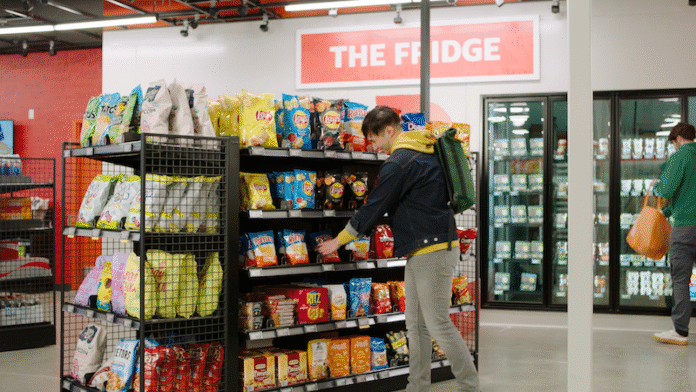Reducing Retail Specific Challenges
Downtime affects customer experience, particularly during busy shopping periods. Retailers using remote support are better equipped to maintain service quality across all locations, even under pressure. This is especially valuable when smaller stores lack dedicated technical personnel and must rely on head office resources.
Some of the most effective solutions come from platforms like TSplus Remote Support. These tools offer features such as cross-platform compatibility, secure session management, and real-time diagnostics, which help ensure issues are handled consistently no matter the location. By choosing remote management software with flexible capabilities, businesses avoid the pitfalls of fragmented support methods.
Tools that offer unattended access are especially useful in retail settings. They allow maintenance tasks, such as updates and patching, to be scheduled after trading hours. This avoids disruption and reduces the risk of performance issues during critical sales periods.
Building Efficiency Through Remote Support Integration
Integrating remote support software with existing systems is essential for managing technical issues at scale. Many platforms now link with helpdesk tools, customer relationship systems, and inventory management dashboards. This streamlined approach enables quicker responses and better context for support agents.
Store staff can submit detailed reports that automatically populate support tickets with information like device type, store location, and incident time. This removes guesswork and speeds up resolution. Documentation from previous sessions can also be shared internally, creating a reference library that helps with recurring problems.
As retailers evaluate new solutions, compatibility with Point of Sale and back office systems should be a priority. Ensuring remote sessions meet internal security standards further protects sensitive business and customer data.
Keeping Retail Systems Secure
Security remains an important consideration for any remote access deployment. Retailers must ensure that the systems they use comply with standards relevant to payment processing and data handling.
Remote IT support platforms should include features such as end-to-end encryption, access control by user role, and session logging. These capabilities help reduce the risk of unauthorised access and provide transparency in case of audits or customer concerns.
Senior IT staff can be granted broader permissions, while junior technicians receive access only to relevant tools and systems. This structure limits exposure and supports accountability. Session logs offer a clear record of support activity, which is useful for both compliance and internal review.
Retailers are also encouraged to conduct regular audits of their permissions and usage protocols. Doing so reduces the likelihood of outdated access being exploited and helps maintain a clean and efficient support environment.
Scaling Remote IT Support Across Stores
Introducing a remote support framework should begin with an assessment of the existing technical setup and common pain points. Businesses need to understand where bottlenecks exist, which stores face the most challenges, and how support processes currently operate.
Many choose a phased rollout approach, starting with a few locations to test and refine procedures. Others opt for full-scale deployment if internal systems and training are already in place. Both methods benefit from strong documentation, clear communication, and ongoing monitoring.
Providing staff with concise troubleshooting guides and access to recorded sessions helps standardise issue handling. This improves confidence at store level and enables teams to resolve minor problems independently before escalating more complex ones.
Choosing platforms that integrate easily with existing processes and tools supports this transition. Look for solutions that facilitate ticket management, session recording, file transfer, and multi-device compatibility to ensure a seamless experience.
Looking Ahead: Evolving Support Models
Remote IT support continues to evolve alongside advances in retail technology. Many businesses are adopting proactive models that detect system anomalies before they result in failures. These predictive tools help schedule maintenance or notify support teams when key indicators show abnormal patterns.
Augmented reality is also becoming more common in large retail networks. With AR-enabled headsets, store staff can show technicians a live view of the problem. Support teams then guide fixes by displaying visual cues directly in the staff member’s field of view, reducing the chance of mistakes and speeding up the repair process.
In parallel, self-healing systems are being rolled out. These can automatically resolve minor issues like software crashes or memory leaks without human involvement. As devices like smart shelves, automated checkouts, and IoT sensors become mainstream, remote support platforms must evolve to manage these technologies effectively.
Retailers using adaptive tools are better positioned to minimise downtime and ensure consistent performance. Software that offers detailed monitoring dashboards, alerts, and unified device control simplifies this complex task across multiple locations.
A More Resilient Retail Strategy
Multi-location retailers that invest in scalable, secure remote support solutions are better prepared to handle technical issues without disrupting their daily operations. Remote IT support allows them to protect customer service standards, minimise costs, and maintain reliable systems across all stores.
The ability to respond quickly, update systems remotely, and resolve problems without dispatching staff provides an operational edge. As technology becomes even more central to retail success, having the right support infrastructure in place is no longer optional. It’s a necessity for sustainable performance and long-term growth.






